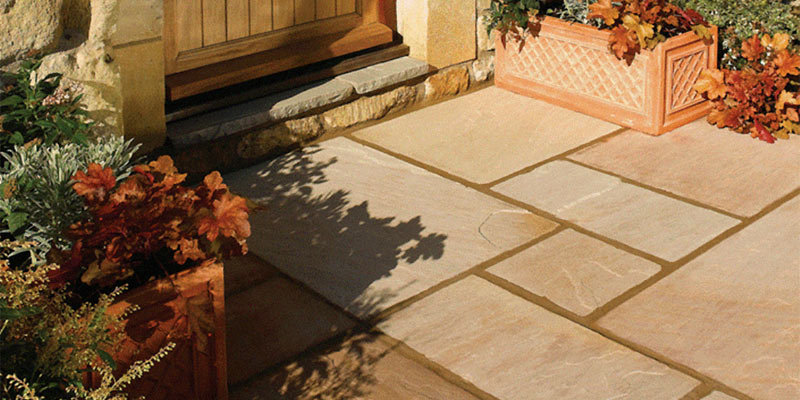
Paving needs to be laid on a structure consisting of distinct layers of different materials. These layers are essential to properly prepare the paving area, as each layer builds on the strength of the previous. This article will discuss the different layers, and what you need to do with each of them to prepare your patio for paving.
1. First Layer: Sub-grade
Firstly, remove existing topsoil till you reach the more stable sub-soil beneath, known as the sub-grade.
Also, remove any vegetation such as grass, weeds and roots, as the decomposition of these materials causes settlement of the paving laid on top.
2. Second Layer: Sub-base
The sub-base is the most important layer when preparing the area. Sub-bases are not essential for all patio projects, but are vital when laying block paving to prevent settlement of the slabs.
There are various materials that can be used for the sub-base, depending on the project being carried out. Type 1 MoT should be used under driveways and areas with heavy traffic, as it is free-draining and prevents voids in the sub-base.
For patios and standard driveways, ballast and crusher run is ideal, but not suitable for surfaces with heavy traffic such as commercial areas.
3. Third Layer: Bedding or Laying Course
The bedding or laying course is essentially the layer onto which your chosen paving is laid, and supports and solidifies the paving. This third layer allows for any uneven levels and variations in thickness without compromising the finished level of the paving.
The material used for this layer is determined by the type of paving to be laid. For instance, concrete block paving should be laid upon unbound sharp sand, as creates a more stable and solid foundation.
In contrast, a sharp sand cement is required for natural sandstone. This ensures that the slabs are securely settled, and is suited towards the different thicknesses of the stone.
However, do not use building sand on the bedding or laying course, as it does not allow for sufficient drainage for any paving materials.
4. Final Layer: Paving Layer
The fourth and final layer is the layer of your chosen paving. Whether this be flag paving, block paving, carpet stones or setts, you have prepared your patio for paving and are now ready to lay the final layer.
As you can see, the area to be paved needs to be prepared one layer at a time. Begin with the sub-grade, followed by the sub-base, then bedding course or laying course, and finish with the paving layer. You should follow these steps carefully as preparing these layers will make sure
that the area is sufficiently ready for your patio and your patio is built on solid and secure foundations.
This post was written by Simply Paving, a leading online paving supplier with expertise in gardening, paving, DIY and design.
